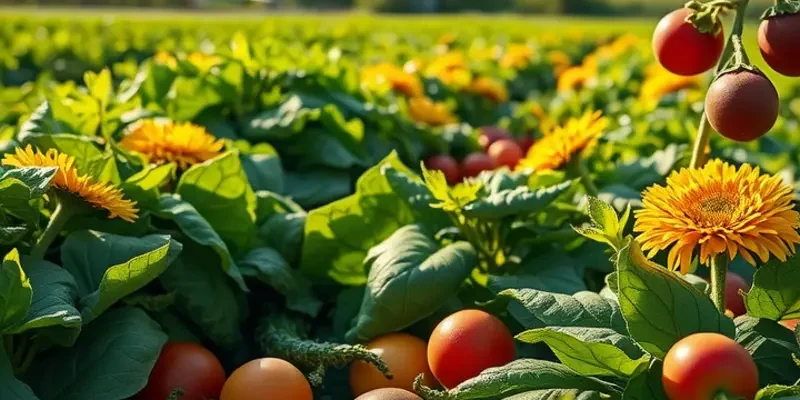Roasting meat is an art that transforms ordinary cuts into extraordinary meals. By mastering a few essential techniques, you can achieve tender, flavorful, and beautifully browned meats that impress family and friends alike. Whether you’re a novice or more experienced in the kitchen, these best practices will set you on the path to becoming a roasting pro. Let’s explore the steps that will make your next roast unforgettable.
Choosing the Right Cut of Meat

Selecting the ideal cut of meat is the first step in mastering your roasting skills. Each cut has unique characteristics that influence how it reacts to roasting, affecting tenderness, flavor, and overall outcome. By understanding these differences, you can make informed decisions to elevate your dishes.
When considering a roast, focus on cuts well-suited for the dry heat of this cooking method. Cuts from parts of the animal’s body that are rich in muscle tissue, such as the shoulder, ribs, and loin, tend to perform better. These areas generally contain more collagen, which breaks down into gelatin during roasting, enhancing flavor and creating a juicy texture.
Prime rib, tenderloin, and sirloin are popular choices for roasting. Prime rib is known for its marbling, which is small streaks of fat interspersed within the meat. This marbling is crucial as it melts during cooking, enriching the meat with flavor and moisture. Tenderloin offers a leaner option but requires careful attention to prevent drying out. Sirloin balances between marbling and tenderness and is versatile for different flavor profiles.
For those who prefer bolder, beefy flavors, consider cuts like chuck roast or brisket. While typically tougher, these cuts respond well to slow roasting, allowing the connective tissues to break down fully, resulting in tender meat with deep flavors.
Timing also plays a critical role in choosing a cut. Faster-cooking cuts, like tenderloin, are ideal for quick roasts while maintaining succulence. If you have more time, tougher cuts benefit from slow, prolonged roasting, concentrating flavors while softening the texture.
Health-conscious cooks might prioritize leaner cuts. However, these require attention to prevent drying out, possibly by utilizing techniques to lock in moisture, such as wrapping or marinating. For more insights on cooking without adding excess salt, you can explore this guide on flavor enhancers.
In addition to selecting the right cut, it’s crucial to note the quality of the meat. Look for cuts with even marbling and a fresh color—bright red for beef, pale pink for pork. Freshness is key to delivering the best roasted results, enhancing textures and flavors.
In summary, choosing the right cut is a blend of science and art. It involves understanding the meat’s composition and how it reacts to roasting. By selecting the appropriate cut and considering factors such as marbling, cooking time, and desired flavors, you can consistently achieve perfect roasts that delight the palate.
Techniques for Perfectly Roasted Meat

Once you have selected the ideal cut of meat, the next step is to refine your roasting techniques to turn it into a culinary masterpiece. The magic lies in the details: from the precise art of seasoning, to mastering temperature control, and finally, in the way you rest and slice the meat to seal in its juices.
Seasoning your meat properly is the first and perhaps most crucial step. A well-seasoned piece of meat allows the flavors to penetrate deep into its fibers, enhancing its natural taste. Salt is your ally here; it not only enhances flavor but also helps in drawing out moisture which creates a flavorful crust when roasted. Don’t shy away from seasoning the meat generously, and, if time allows, do it a few hours in advance or even the night before. This allows the salt to seep in fully, tenderizing the meat for an exceptional outcome.
Temperature plays a pivotal role in roasting. Begin with high heat to achieve a beautiful sear. This initial blast of heat, usually at 450°F (232°C), caramelizes the outside, locking in the juices while imparting a rich flavor. After searing, lower the temperature to around 325°F (163°C) to let the meat gently cook through. This slower phase ensures an even and thorough cook, preventing the exterior from overcooking before the inner parts are done.
Using a meat thermometer is essential to ensure accuracy here. Overshooting your target internal temperature by even a few degrees can result in a loss of juiciness and tenderness. Each type of meat has an ideal internal temperature for doneness—beef and lamb are best at 135–145°F (57–63°C) for medium rare to medium, while pork should be cooked to at least 145°F (63°C). Chicken, being a lean meat, must reach at least 165°F (74°C) for safety.
Once out of the oven, your roast still needs time. Resting is a vital stage often overlooked. Allow your meat to rest for at least 10-15 minutes under a tent of foil; this process lets the juices redistribute throughout the meat. If you slice too soon, all those delightful juices will pool around your roast instead of staying where they belong—inside the meat.
Finally, how you slice your roast matters too. Always cut against the grain for maximum tenderness; this shortens the meat fibers, making each bite more tender and flavorful. Each step, from start to finish, plays an integral part in the final taste and texture of the roast.
For those seeking ways to enhance flavor without adding salt, exploring flavor boosters might provide new insights and options. This journey into roasting will elevate your kitchen reputation and ensure your roasted meats are not just meals but memorable experiences.
Final words
Roasting meat to perfection requires a blend of knowledge, technique, and a bit of patience. By choosing the right cut and employing effective roasting techniques, you can elevate your meals to new heights. Always remember to season well, monitor temperatures carefully, and allow your meat to rest. As you practice these methods, you’ll not only improve your skills but also gain confidence in the kitchen. Soon, you’ll create roasts that are tender, flavorful, and truly memorable.







